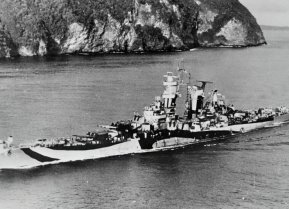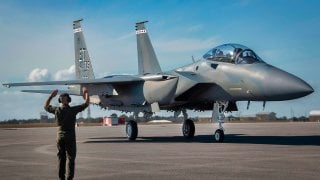NGAD Fighter vs. F-15EX Eagle II: Air Force Has Hard Choice to Make
The Pentagon's decision to reduce F-15EX fighter jet purchases for the fiscal year 2025 stems from the need to reallocate funding towards research for future capabilities, notably the Next Generation Air Dominance (NGAD) program.
Summary: The Pentagon's decision to reduce F-15EX fighter jet purchases for the fiscal year 2025 stems from the need to reallocate funding towards research for future capabilities, notably the Next Generation Air Dominance (NGAD) program. Budget constraints imposed by the Fiscal Responsibility Act and the high cost of the F-15EX at $93.95 million per airframe have influenced this decision. Despite its impressive capabilities, including record-breaking ordnance carrying capacity, advanced electronic warfare systems, and modern sensors, the Air Force has scaled back its procurement plans from an initial 144 jets to 94, prioritizing investment in next-generation technologies over expanding the current fleet.
NGAD vs. F-15EX Eagle II?
The Pentagon revealed it will be purchasing fewer F-15EX fighter jets than initially expected for the 2025 fiscal year. According to reports, procurement of the F-35A program is also being curtailed to ensure adequate funding for research surrounding future capabilities. The Air Force now plans to purchase 18 F-15EX fighters for $1.8 billion next year. After 2025, the service does not plan on acquiring any additional Eagle fighters.
Although the Air Force requested an overall increase in funding, its priorities will likely surround its upcoming Next Generation Air Dominance (NGAD) program.
What Makes the F-15EX so Expensive?
While the F-35 Lightning II may be the most advanced fighter jet to fly the skies for the U.S. military today, the platform is surprisingly not the most expensive.
The new Boeing F-15EX variant is actually more costly per airframe.
According to last year’s annual Selected Acquisition Report, each Eagle II jet will cost a staggering $93.95 million per airframe to produce.
Although this airframe may come with a hefty price, it is worth it.
Spending limits imposed by the Fiscal Responsibility Act (FRA) have reduced the defense budget, forcing all the services to pare back plans on new capabilities.
In order to make room for the NGAD program, additional F-35As and other airframes, the Air Force has been forced to reduce its Eagle II acquisition.
In fact, the latest Eagle variation has already broken records in terms of tonnage and quantity of ordnance carried. The formidable fighter was able to carry and launch up to a dozen air-to-air missiles during flight tests last January, an impressive feat that showcases the prowess of the platform.
Tonnage-wise, the F-15EX can carry up to 13.6 pounds of ordnance, which is more than previously documented.
Other specs & capabilities for F-15EX Eagle II
In addition to its impressive ordnance-carrying capabilities and tonnage, the F-15EX is also equipped with a new electronic warfare system, modern sensors, advanced cockpit systems and radars. Additionally, the platform features an open missions systems architecture that enables the rapid integration of the latest aircraft technologies.
Other details have been outlined by Airforce Technology, “The aircraft will be installed with fly-by-wire flight controls and the APG-82(V)1 active electronically scanned array (AESA) radar, which will offer extended range and improved multi-target track and precision engagement capabilities. The radar will provide the ability to detect, identify and track multiple air and surface targets at longer stand-off ranges, supporting informed and faster decision-making during conflicts.”
NGAD and F-15EX Eagle II Present Hard Choices for Air Force
Considering the F-15EX’s sophisticated capabilities, it is surprising that the Air Force has reduced its procurement of this platform two times. Originally, the service intended to purchase at least 144 of these fighters. However, when one considers the threats emerging from Russia and China, putting more money into the F-15EX
However, this number dwindled to 104 Eagle IIs and now stands at a mere 94. This low number has forced some analysts to question whether or not the addition of these fighters would make a difference in a future conflict. Despite this, the Air Force remains confident that the Eagle IIs will contribute mightily to future missions.
About the Author: Maya Carlin
Maya Carlin is an analyst with the Center for Security Policy and a former Anna Sobol Levy Fellow at IDC Herzliya in Israel. She has by-lines in many publications, including The National Interest, Jerusalem Post, and Times of Israel. You can follow her on Twitter: @MayaCarlin.
Image Credit: U.S. Air Force.


